The U.S. sunbelt runs roughly from Southern California through Florida and the Carolinas, an area, due to its intense heat and solar radiation, where building energy loads are at their highest, the result of excessive artificial cooling in what are often fully glazed structures. Growing emphasis on climate change and sustainability have impelled architects and developers to explore alternatives to all-glass curtain walls to maintain enticing outward views while reducing energy consumption and improving user comfort. Sunshades are one passive strategy design teams are increasingly taking advantage of to mitigate solar heat gain and glare.
The Applied Research Building (ARB), at the University of Arizona (UofA) in Tucson, designed by SmithGroup with McCarthy Building Companies, opened in April 2023 with a price tag of $85 million. At 89,000 square feet, it is home for UofA’s applied physical sciences and engineering programs, and serves as the school’s key research incubator for ongoing collaboration with NASA and other federal agencies. The mechanical load of the laboratory building, and the subsequent costs, required a finely tuned enclosure to reduce solar gain. The team developed a pleat-like arrangement—not unlike the solar arrays of the International Space Station—of protective aluminum-composite panels alternating with laminated-and-fritted glass fins. The reddish-brown color of the metal mirrors the prevailing masonry found on campus. “We went through exhaustive research of campus buildings, documenting the specific color of each brick, which ranges from a muted tan to a very saturated red,” notes SmithGroup vice president and design director Mark Kranz.
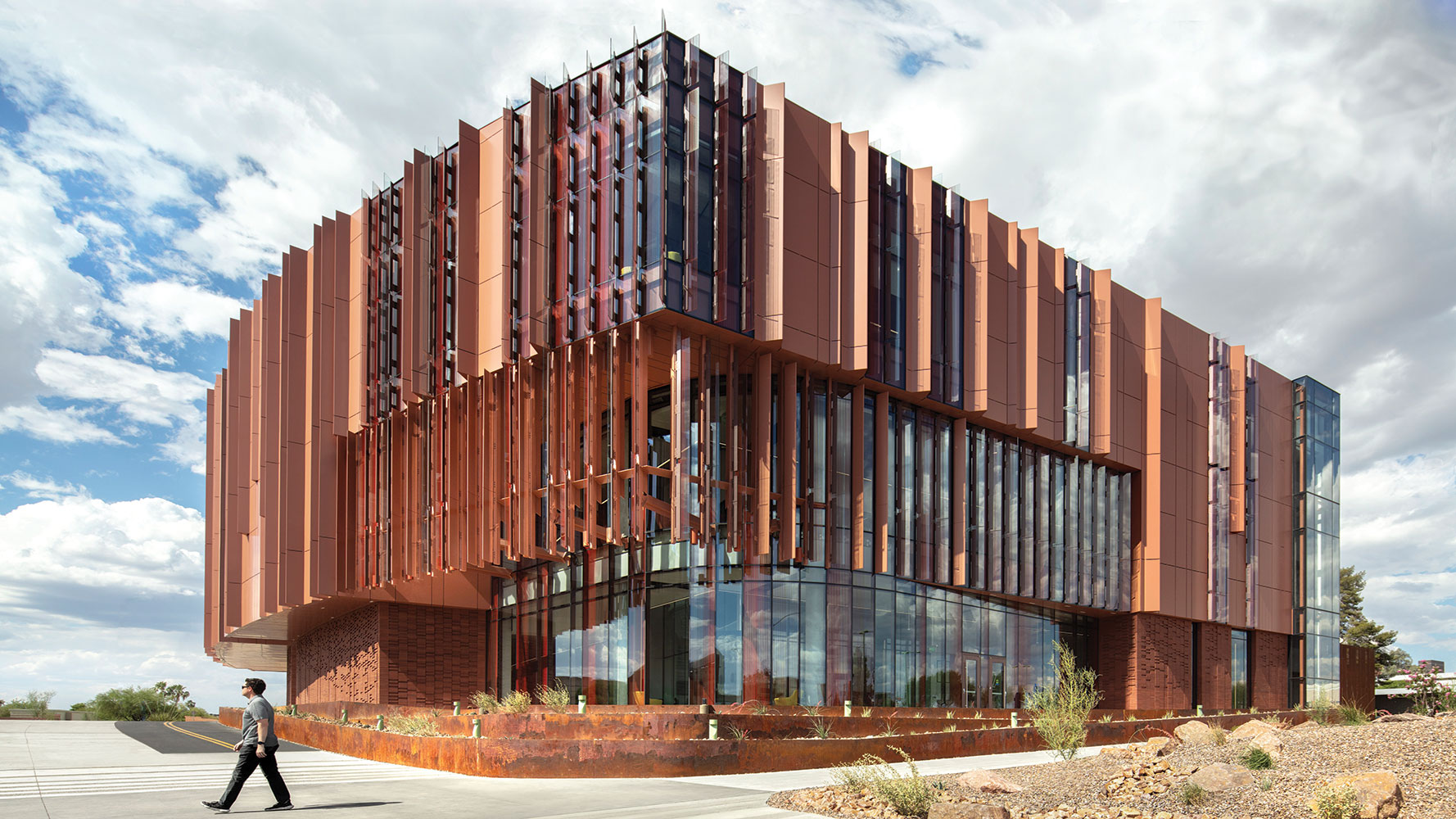
Shading the ARB’s two-story lobby was a primary concern for the design team. Photo © Bill Timmerman, click to enlarge.
The design-build team worked closely with facade fabricator and installer Kovach—a frequent collaborator of SmithGroup with prior project experience on the campus—to develop the sunshade system, modulating the position of the fin angles across the building through many rounds of energy and parametric modeling. The resulting ACM panels are braced and fastened to a steel angle and structural steel beam, while the glass fins are held by an aluminum plate that also fastens to the structural steel. The building’s southwest corner—which wraps a two-story, fully glazed entrance and lobby—features what the design team refer to as a “solar skirt” of shades offset approximately 11 feet from the facade, a gesture that maintains high visibility while significantly cutting down on heat gain in the large volume.
Click detail to enlarge
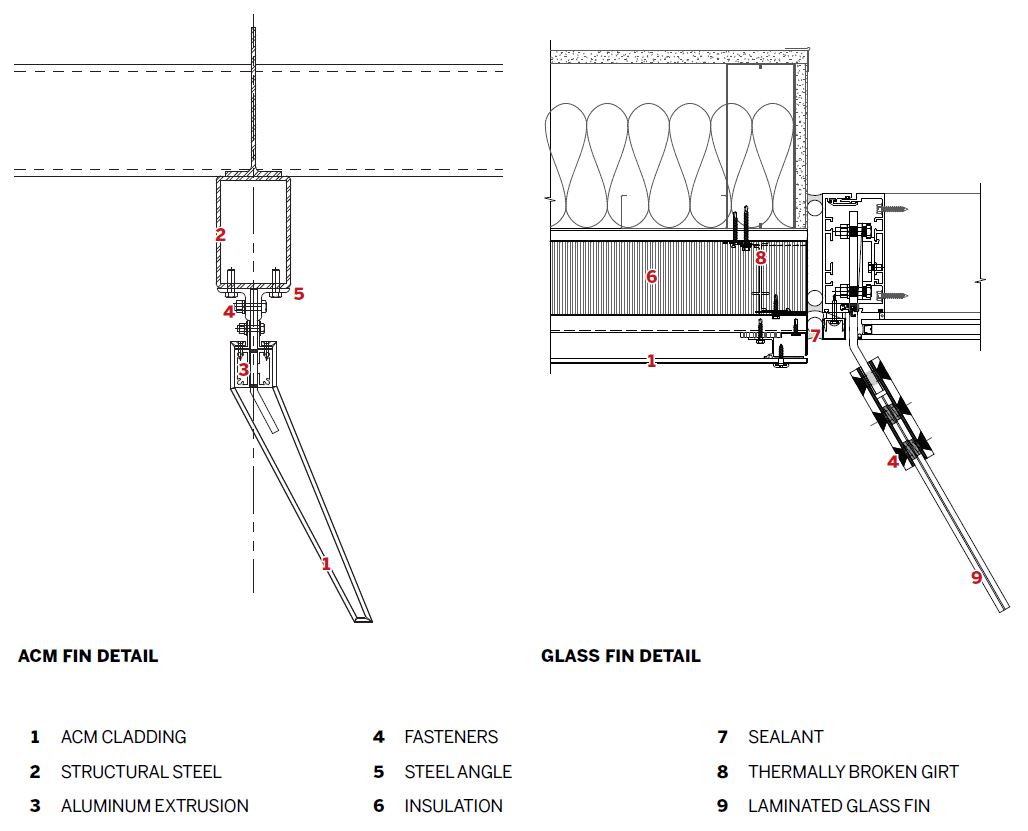
This general strategy proved to be a challenge, however, in meeting California’s Title 24 energy-efficiency standards, which permit a maximum of 40 percent window to wall. For Verse Design LA’s Thirty75 Tech, a Class A office space, the program for a 260,000-square-foot building in Santa Clara would emphasize floor-to-ceiling glazing for all elevations. But that preference proved to be a test, especially since nearly half the building envelope faces south and west. With these considerations in mind, the architects—in collaboration with engineering firm Glumac and fabricator/installer Architectural Glass & Aluminum—developed an aluminum louver system that hangs, like metallic draperies, from diagonal steel outriggers located above the building roofline. This move also allows space for 3-foot-wide catwalks, which not only provide maintenance access to the curtain wall, but additional reinforcement to make the louver system more rigid.
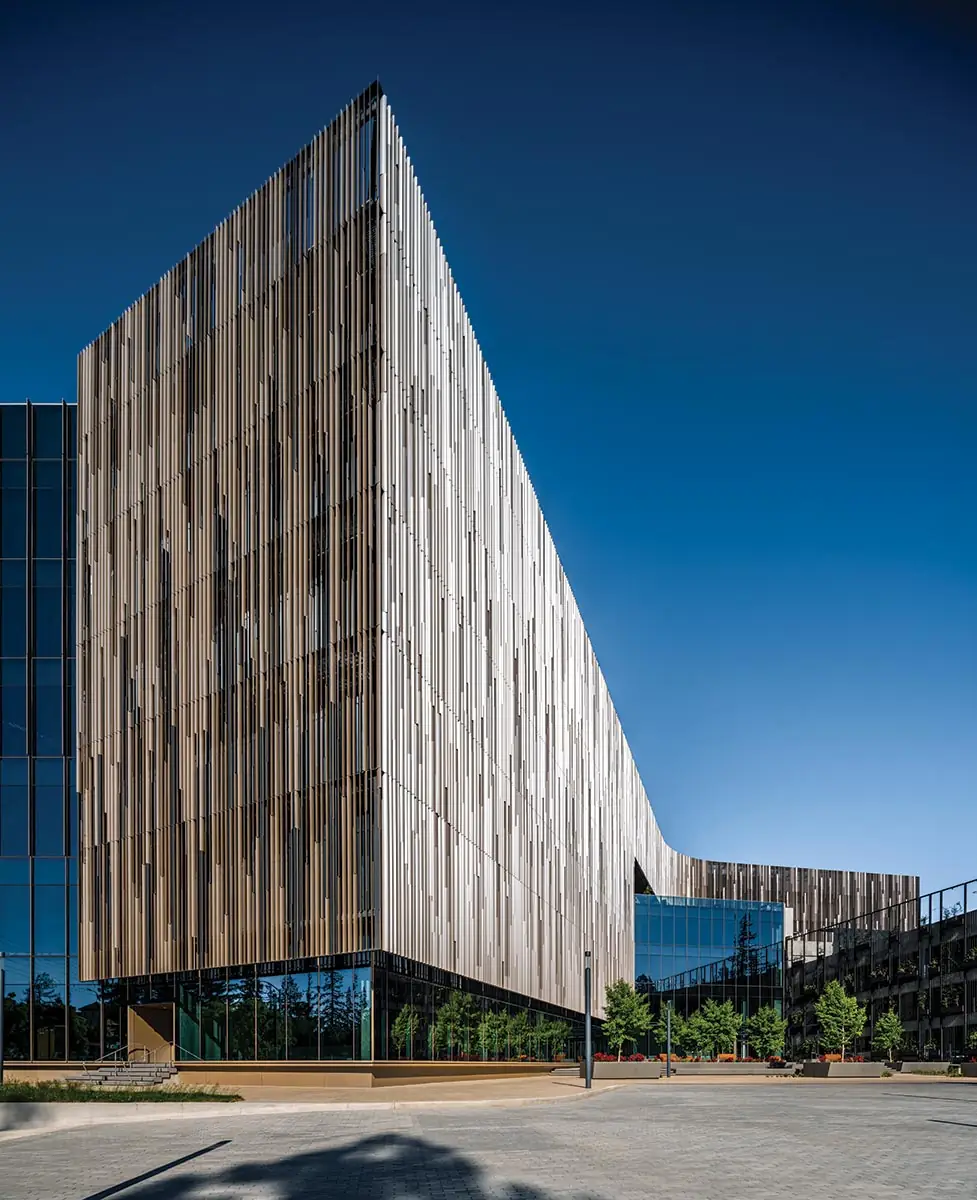
Thirty75 Tech’s louvers allow for glazed facades, while meeting energy standards. Photo © Tim Griffith
Envisioned by the design team as a 38-foot-tall screen of vertical strands of pixels, the surface is variegated by the positioning of 2-foot-long airfoil-shaped aluminum louvers, which, at 15-degree increments, range from 15 to 60 degrees in rotation. “We were looking at triangulated billboards, and the digital rain at the introduction of the Matrix film series, and sought a shimmering solution that changes according to one’s perspective,” says Verse Design LA principal Paul Tang. All in all, there are 24 variations of vertical seams interspersed throughout the expanse to maintain visual differentiation. The result is a vivid yet static facade with an approximately 70 percent window-to-wall ratio that, with the help of shading and mechanical systems, meets Title 24’s energy-efficiency requirements.
Click detail to enlarge
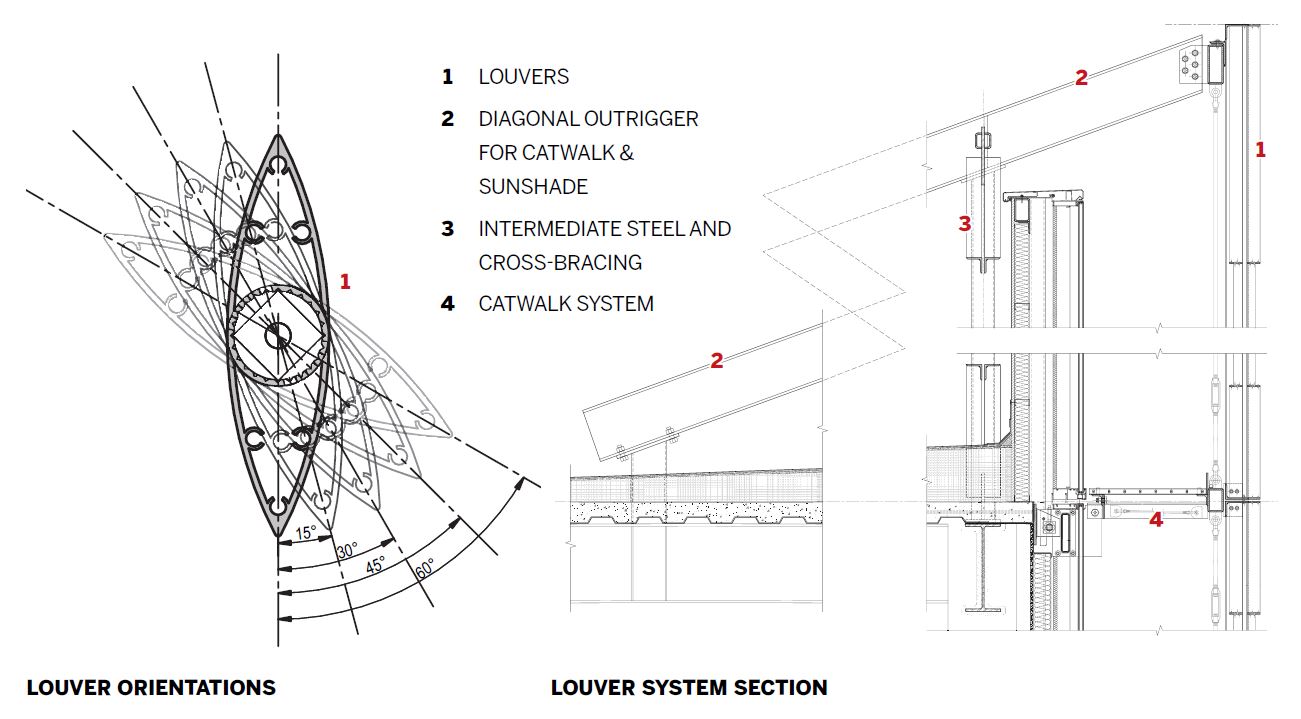



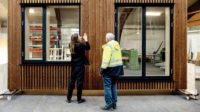
Post a comment to this article
Report Abusive Comment